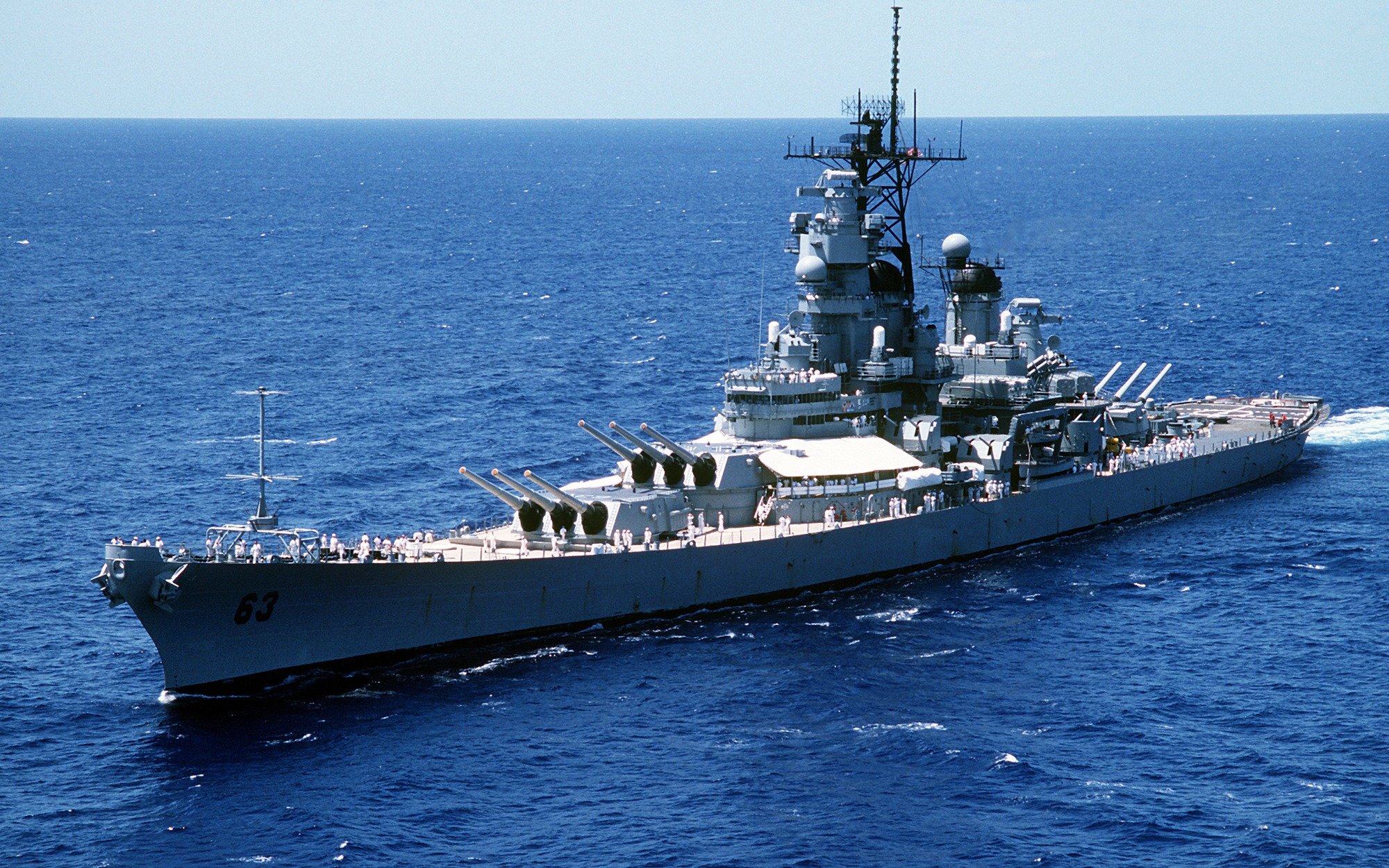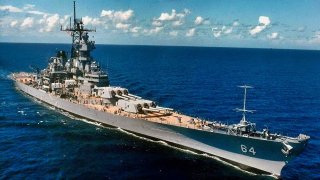5 Worst Battleships to Ever Sail According to Professor and Naval Expert
The worst of the deadliest warships ever.
Battleships were tools in service of providing national security, and like any tools their success in service varied. The engineering and financial demands of building a modern battleship often exceeded the reach of the governments that ordered the ships. When that happened, substandard ships that were sometimes more dangerous to their crews than to the enemy resulted.
France Class
France was not initially sold on the idea of the dreadnought battleship, preferring instead to concentrate on the Dantons, a class of advanced pre-dreadnoughts. Indeed, the Dantons took up the bulk of the construction slips that the French could use for large battleships in the years before World War I. When the French got around to building dreadnoughts, they were half-a-decade behind international standards.
The Courbet class was France’s first effort. Displacing twenty-three thousand tons, they could make twenty-one knots and carried twelve twelve-inch guns in a configuration that included two wing turrets. The Courbets began to enter service in 1913, at which point they were far behind state-of-the-art battleships being constructed in the United Kingdom, the United States, and Japan. Not terribly useful, the Courbets did not see a great deal of service in World War I and were beginning to leave service by World War II. One of the ships sank after hitting a rock; another was taken over by the Germans and sunk by allied aircraft; another was sunk as a breakwater off Normandy; the last was hulked and scrapped in the 1950s.
Espana Class
After the Spanish-American War, the Spanish government debated for years about how to rebuild the fleet. This delay enabled the Spanish to skip the final generation of pre-dreadnought battleships, and instead contemplate internationally competitive vessels. Unfortunately, the size of the Spanish economy did not enable the construction of advanced warships.
Assisted by parts and designs from Great Britain, Spain decided on what would become the world’s smallest dreadnought, the Espana class. At sixteen thousand tons, the Espanas carried eight twelve-inch guns in four twin turrets, two on the centerline and one on each wing. The Espanas could make about nineteen knots and were equipped with an eight-inch main armor belt.
Although an efficient use of a small hull, in the end the Espanas were only fit for fighting each other. During the Spanish Civil War they narrowly missed this opportunity, as one ship ended up on either side. One ship suffered an internal explosion and sank; another sank after hitting a friendly mine; another sank after hitting a rock.
Gangut Class
Despite the loss of most of its fleet at the Battle of Tsushima, the Russian Empire maintained ambitions for a first-rate fleet. Unfortunately, these ambitions outstripped the limited technical and industrial resources available to Russia. Russia solicited multiple designs from European partners, eventually deciding on a combination of ideas for its first class of dreadnoughts. While some of the ideas were innovative, the overall result was a mess.
The Ganguts entered service in 1914–1915, years after the first generation of European dreadnoughts, and were completely outclassed by contemporary vessels. Relatively large (twenty-four thousand tons) with a decent speed (twenty-two knots), they were armed with four triple 12” turrets, offering a twelve-gun broadside but only three gun end-on fire. The armor scheme was relatively light (a main belt of 8.9”), and quickly fell behind international standards in terms of distribution. Against modern British or German ships, they would have suffered badly.
The four ships had checkered careers, each undergoing multiple name changes during service to the Russian Empire and the USSR. One ship burned while laid up and was never repaired. One barely survived an eventful transfer to the Black Sea. None did much of consequence in either world war, and all were scrapped in the 1940s and 1950s.
Bismarck Class
Perhaps the most famous battleships ever built, both Bismarck and Tirpitz were formidable units which drew considerable Allied attention. However, the class suffered from Germany’s lack of experience with battleship construction and maintenance during the interwar period.
Bismarck and Tirpitz entered service in 1940 and 1941, respectively. They displaced fifty thousand tons, could make thirty knots, and carried eight fifteen-inch guns. While heavily armored, the armor was poorly distributed. The main armament did not take advantage of advances in turret and gunnery technology, consisting of four twin turrets rather than the more efficient distributions used in other navies. The ships lacked a dual-purpose secondary armament, which increased weight and reduced anti-aircraft effectiveness. Altogether, they were the least capable of the final generation of fast battleships.
The two ships were nevertheless quite dangerous. Bismarck destroyed the old Royal Navy battleship Hood at the Battle of Denmark Straits, and damaged HMS Prince of Wales. She fell victim to combined air and surface attack. Tirpitz had a relatively uneventful career before being sunk by British bombers in a Norwegian fjord in 1944.
Tegetthoff Class
The four ship of the Tegetthoff class began to enter service with the Austro-Hungarian navy in 1912. Built to an innovative design that used triple turrets in a superfiring configuration, the Tegetthoffs were extremely well-armed. They carried twelve twelve-inch guns on a displacement of twenty-one thousand tons, with a speed of twenty knots and an eleven-inch armor belt.
With so much firepower, something had to give. Unfortunately, the Tegetthoffs had poor underwater protection and little damage absorption capacity, even for battleships of their era. This made them highly vulnerable to underwater attack. One ship, the Szent Istvan, was sunk by Italian torpedo boats in 1918. Another, the Viribus Unitis, was sunk by Italian frogmen shortly before the end of World War I. The remaining ships were transferred to Italy and either scrapped or sunk as targets.
Final Salvo:
Battleships were a risky investment, requiring the successful integration of an array of different components. This didn’t always work out in the ways that navies would have liked. Nevertheless, some of the ships above were quite useful to the navies that employed them, even as they engendered substantial risk to crews.

About the Author
Robert Farley, a frequent contributor to the National Interest, is a visiting professor at the United States Army War College. The views expressed are those of the author and do not necessarily reflect the official policy or position of the Department of the Army, Department of Defense, or the U.S. government.
Image: U.S. Navy


